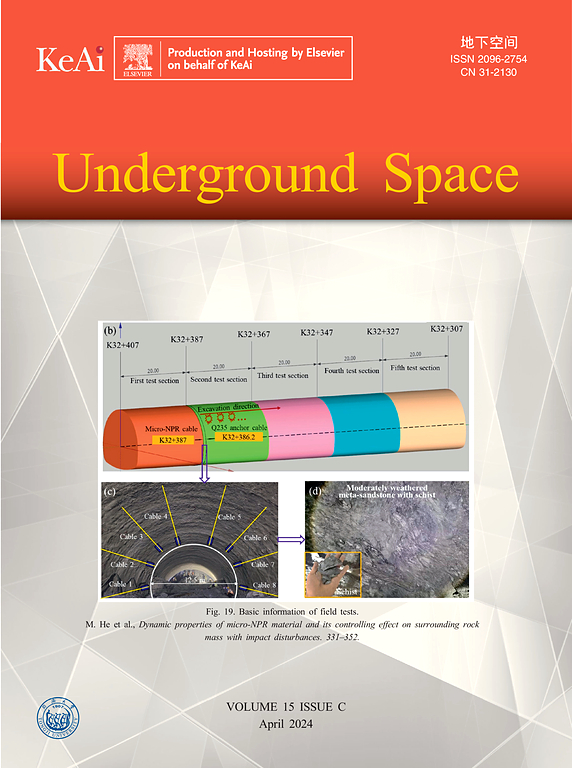Wall movement during dewatering inside a diaphragm wall before soil excavation
IF 8.3
1区 工程技术
Q1 ENGINEERING, CIVIL
引用次数: 0
Abstract
Significant movement of in-situ retaining walls is usually assumed to begin with bulk excavation. However, an increasing number of case studies show that lowering the pore water pressures inside a diaphragm wall-type basement enclosure prior to bulk excavation can cause wall movements in the order of some centimeters. This paper describes the results of a laboratory-scale experiment carried out to explore mechanisms of in situ retaining wall movement associated with dewatering inside the enclosure prior to bulk excavation. Dewatering reduces the pore water pressures inside the enclosure more than outside, resulting in the wall moving as an unpropped cantilever supported only by the soil. Lateral effective stresses in the shallow soil behind the wall are reduced, while lateral effective stresses in front of the wall increase. Although the associated lateral movement was small in the laboratory experiment, the movement could be proportionately larger in the field with a less stiff soil and a potentially greater dewatered depth. The implementation of a staged dewatering system, coupled with the potential for phased excavation and propping strategies, can effectively mitigate dewatering-induced wall and soil movements. This approach allows for enhanced stiffness of the wall support system, which can be dynamically adjusted based on real-time displacement monitoring data when necessary.
地下连续墙开挖前降水过程中的墙体运动
原位挡土墙的显著移动通常被认为是从大体积开挖开始的。然而,越来越多的实例研究表明,在大规模开挖前降低地下连续墙型围护结构内部孔隙水压力会导致墙体移动数厘米。本文描述了一项实验室规模的实验结果,该实验旨在探索与大体积开挖前围护结构内部脱水相关的原位挡土墙运动机制。脱水使围护结构内部的孔隙水压力比外部更低,导致墙体像无支撑的悬臂一样移动,仅由土壤支撑。墙后浅层土侧有效应力减小,墙前侧有效应力增大。虽然在实验室试验中相关的横向移动很小,但在土壤硬度较低且可能脱水深度较大的现场,这种移动可能成比例地更大。分阶段降水系统的实施,加上分阶段开挖和支护策略的潜力,可以有效地缓解由降水引起的墙和土壤移动。这种方法可以增强墙体支撑系统的刚度,在必要时可以根据实时位移监测数据进行动态调整。
本文章由计算机程序翻译,如有差异,请以英文原文为准。
求助全文
约1分钟内获得全文
求助全文
来源期刊

Underground Space
ENGINEERING, CIVIL-
CiteScore
10.20
自引率
14.10%
发文量
71
审稿时长
63 days
期刊介绍:
Underground Space is an open access international journal without article processing charges (APC) committed to serving as a scientific forum for researchers and practitioners in the field of underground engineering. The journal welcomes manuscripts that deal with original theories, methods, technologies, and important applications throughout the life-cycle of underground projects, including planning, design, operation and maintenance, disaster prevention, and demolition. The journal is particularly interested in manuscripts related to the latest development of smart underground engineering from the perspectives of resilience, resources saving, environmental friendliness, humanity, and artificial intelligence. The manuscripts are expected to have significant innovation and potential impact in the field of underground engineering, and should have clear association with or application in underground projects.
 求助内容:
求助内容: 应助结果提醒方式:
应助结果提醒方式:


